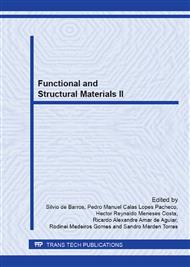p.65
p.77
p.83
p.89
p.99
p.107
p.113
p.119
p.125
Evolution and Prediction of Texture in Commercially Pure Warm Rolled Titanium
Abstract:
Titanium alloys are used in a wide variety of aerospace, energy, industrial and biomedical applications, among other reasons, due to their superior properties. These properties are highly dependent of materials microstructure, i.e. texture, dislocation density and slip system activity. Therefore, in order to be able to design materials with certain properties it is crucial an understanding of the deformation process in terms of microstructural parameters. Microstructure evolution in warm rolled commercially pure titanium was investigated by means of X-ray diffraction and modeled with a crystal plasticity self-consistent scheme. Texture measurements and peak profile analysis were used to characterize the deformation texture and evaluate the relative activity of the various slips systems activated during the deformation process. The peak profile analysis data and the self-consistent predictions of texture evolution showed a good agreement with the experimental deformation texture evolution.
Info:
Periodical:
Pages:
99-105
Citation:
Online since:
June 2013
Keywords:
Price:
Сopyright:
© 2013 Trans Tech Publications Ltd. All Rights Reserved
Share:
Citation:


